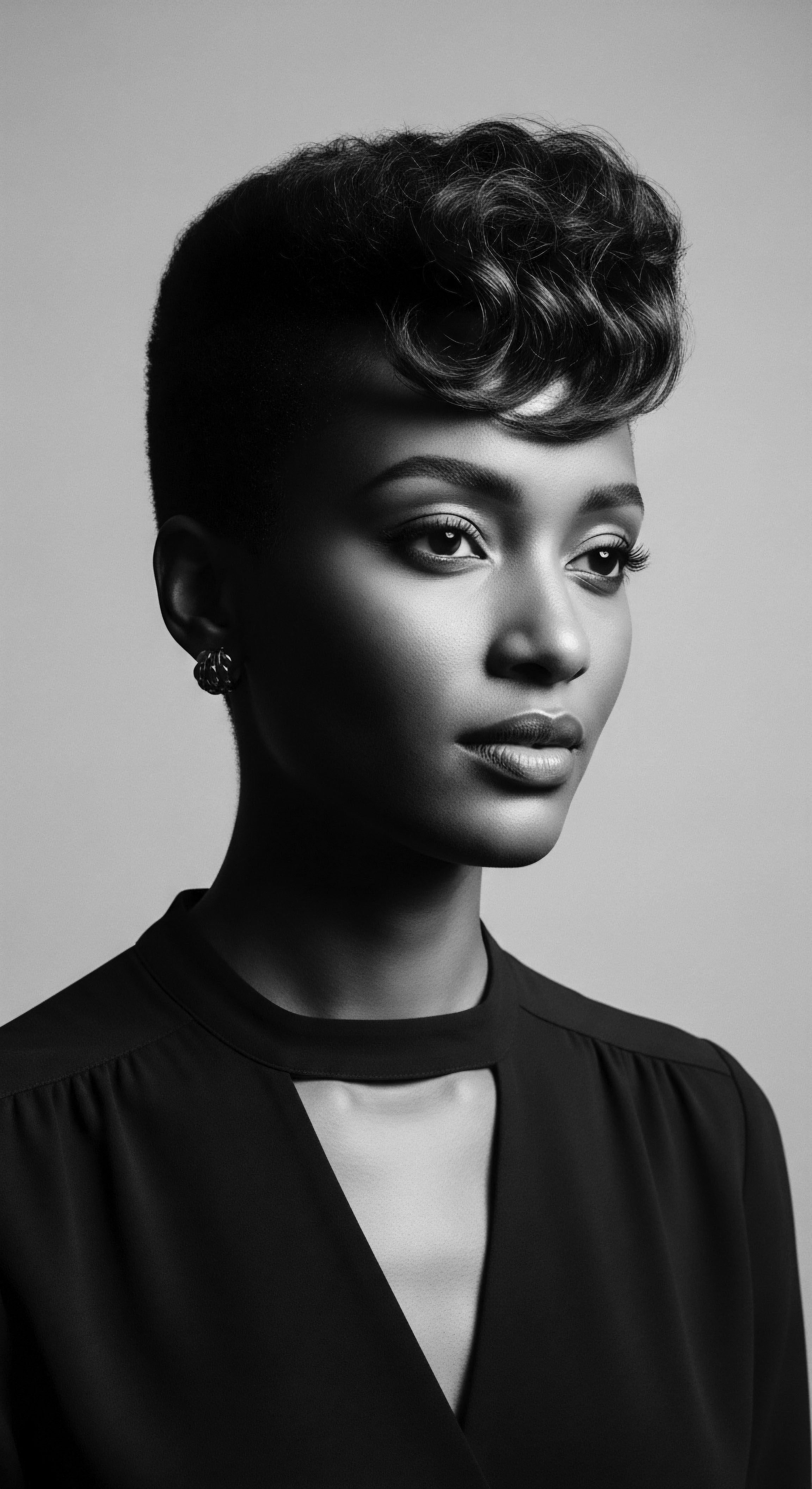
Roots
The night draws its soft cloak over the world, a time for rest, for dreams, and for the quiet work of restoration. For generations upon generations, across continents and through the deep corridors of time, the protection of hair at night was not a casual concern; it was a deeply ingrained practice, a silent testament to its deep value within diverse cultures. For those of us with textured hair, this nocturnal vigil holds a particular resonance, reflecting traditions that guarded not only strands but identity itself. Our coils, our curls, our waves possess a unique architecture, a testament to resilience and adaptation across climates and eras.
Understanding how ancient societies safeguarded their hair during these sleeping hours offers more than historical curiosity; it presents a mirror to our own textured hair heritage, revealing layers of ancestral wisdom that continue to shape our present-day routines. It is a dialogue between the molecular and the communal, between biological need and cultural imperative, all centered on the careful preservation of hair. The very concept of a “Soul of a Strand” finds its origins here, in the ancient recognition of hair as something more than mere adornment, but as a living archive of self and lineage.
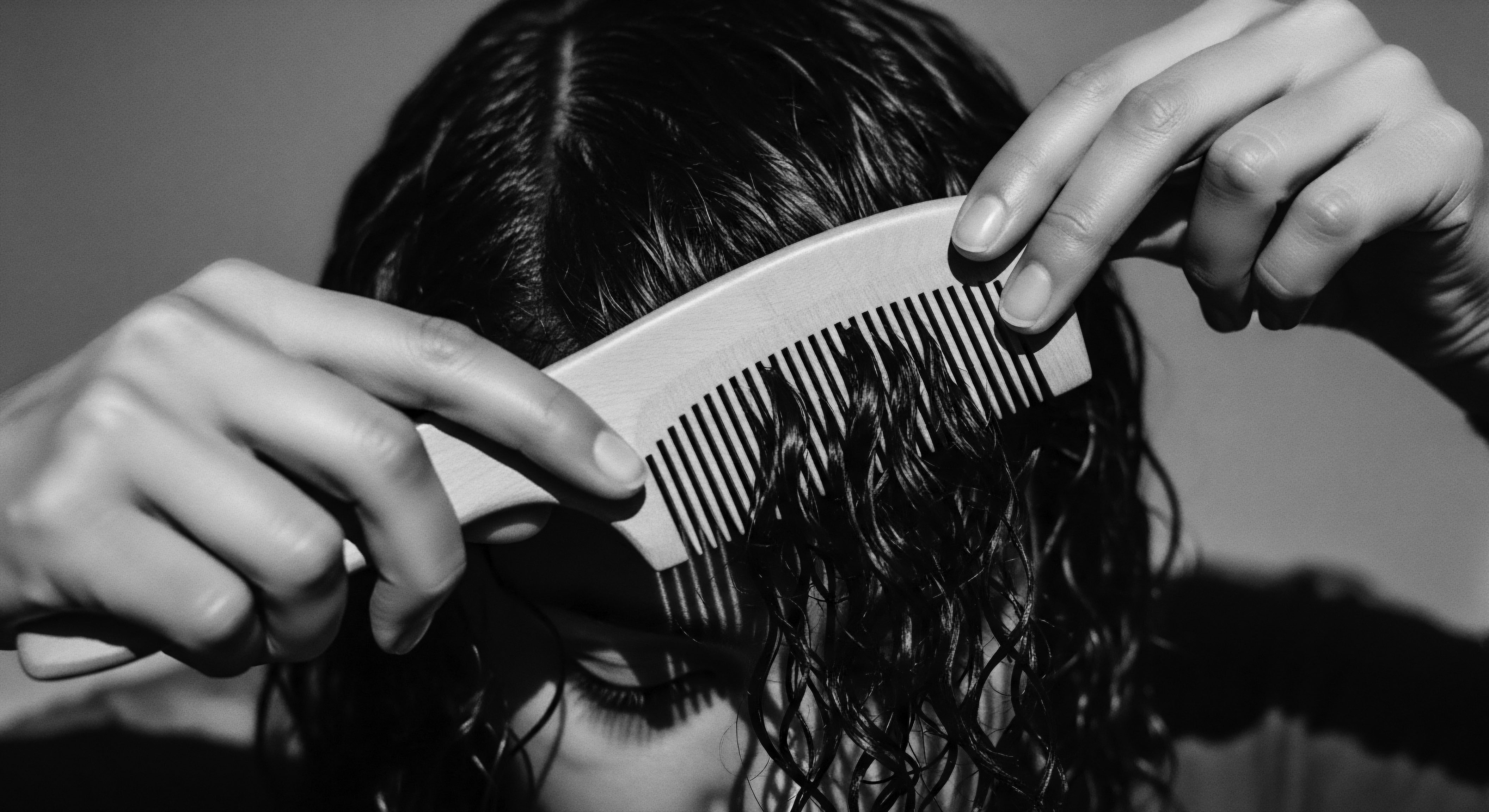
What does the Texture of Hair Reveal about Its Intrinsic Design?
To truly grasp the ancient approaches to night hair care, one must first appreciate the inherent qualities of textured hair itself. Unlike straight hair, our hair forms spirals and undulations, each bend a point where moisture might escape or friction might cause a snag. This very structure, while exhibiting remarkable strength and elasticity, also calls for mindful handling, especially during periods of unconscious movement such as sleep. The elliptical cross-section of a coily strand, for instance, compared to the rounder shape typical of straight hair, profoundly influences how light reflects, how natural oils traverse the length of the hair, and critically, how the hair fiber interacts with external surfaces.
This distinctive shape often results in a cuticle layer that is more exposed or prone to lifting, leading to increased vulnerability to dehydration and mechanical damage. Early communities, perhaps without the scientific lexicon we hold today, understood this intuitively. They observed how daily life, how the elements, how the very act of sleeping could affect hair’s vibrancy. This deep observation formed the bedrock of their methods, practices that were a direct, compassionate response to the hair’s intrinsic design. For Black and mixed-race individuals, this design carries the stories of millennia within each coil, a heritage etched into the very fiber.
Ancient hair protection practices were not random acts, but thoughtful responses to the inherent qualities and vulnerabilities of textured hair.
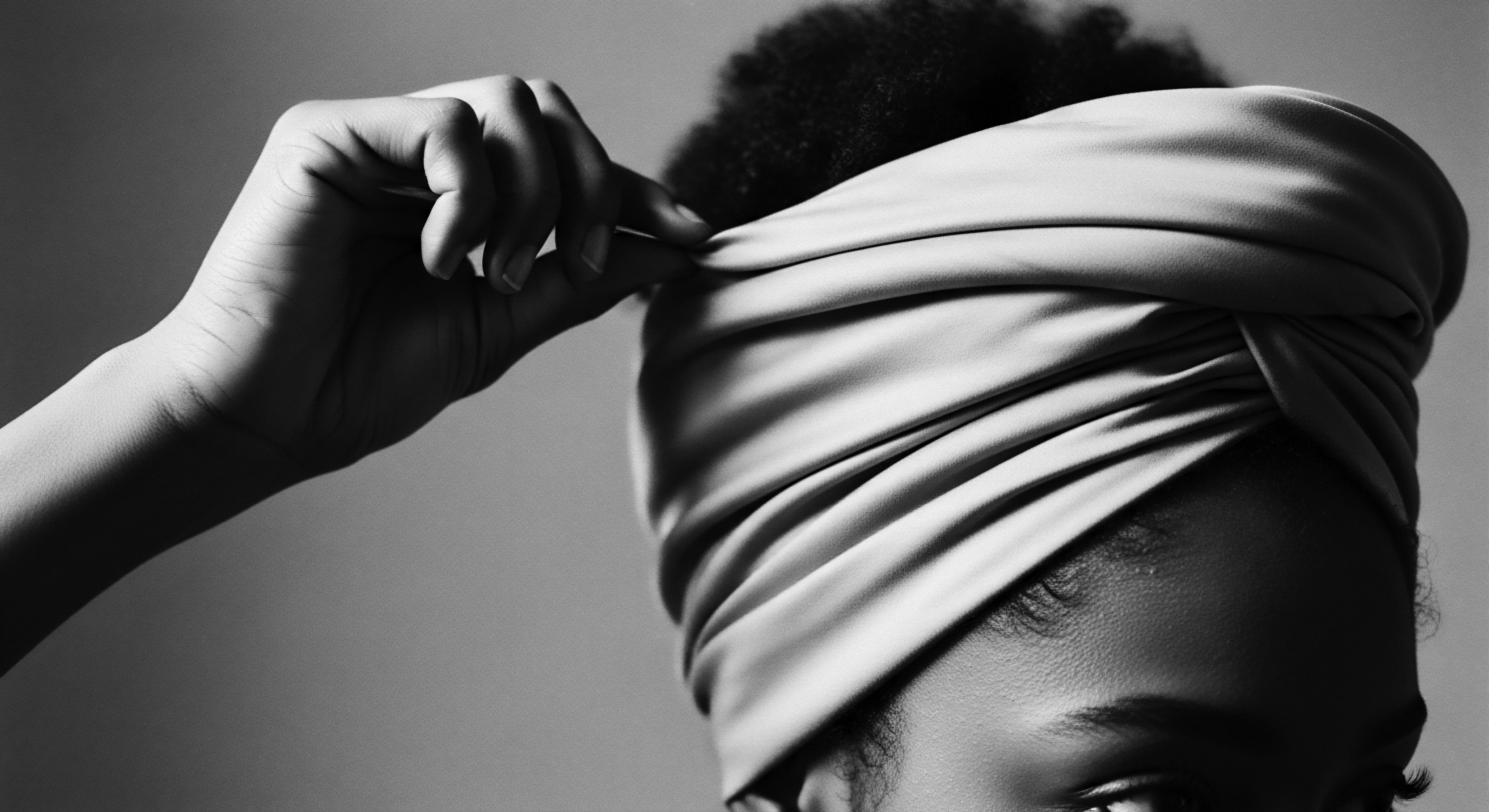
How Did Cultural Understandings Shape Hair Anatomy Knowledge?
The foundational understanding of hair, even in ancient times, extended beyond mere observation. Societies developed taxonomies of hair based on texture, length, and growth patterns, often tying these descriptions to social standing, age, or spiritual belief. While formal scientific classification systems are a modern development, these early cultural categorizations served a similar purpose ❉ to understand and interact with hair effectively. In many African societies, the hair itself was considered a living extension of the self, a conduit for spiritual connection, and a canvas for identity.
The meticulous attention paid to hair, including its nighttime protection, stemmed from this high regard. For example, specific braiding patterns, which often served as protective styles, could also communicate tribal affiliation or marital status. The preservation of these styles overnight meant the preservation of these social markers. Even if the precise anatomical mechanisms of cuticle lifting or protein degradation were unknown, the observed outcome of neglect was clear ❉ dull, weak hair that reflected poorly on the individual and their community.
This ancestral knowledge, passed down through generations, became a living codex, a practical guide to hair health rooted in collective observation and cultural significance. The very act of caring for hair, particularly at night, became a ritual of maintaining one’s place within the community and honoring the spiritual connections attributed to hair. This reciprocal relationship between care and meaning underscores the depth of heritage embedded in hair practices.
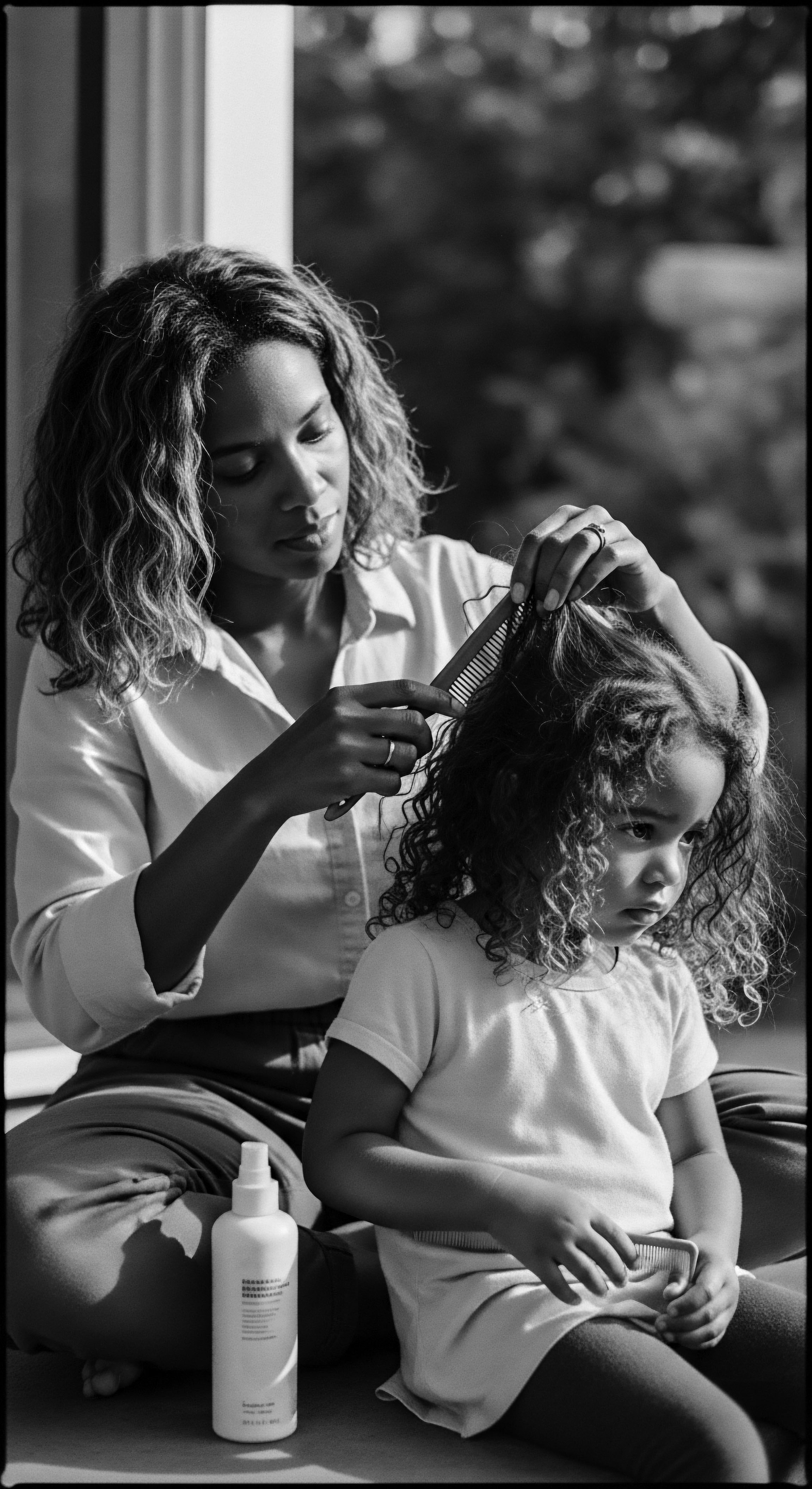
What Role Did Ancient Hair Tools Play in Nocturnal Care?
The ingenuity of ancient cultures extended to the tools they crafted for hair care, many of which would have been instrumental in preparing hair for its nightly rest. Archaeological findings reveal a remarkable array of combs, pins, and adornments, often made from natural materials like ivory, bone, wood, or even precious metals. In ancient Egypt, decorative combs dating as early as 3900 BCE have been discovered in women’s tombs, showcasing elaborate animal motifs. While primarily for styling and adornment during the day, such tools would have been essential for detangling and smoothing hair before protective styling for the night.
The ability to gently separate strands and prepare them for braiding or wrapping would minimize knots and potential damage during sleep. The craftsmanship involved in these tools speaks to the high regard held for hair, seeing it as worthy of sophisticated instruments. These tools were not just utilitarian objects; they were often symbolic, handed down, carrying with them the accumulated wisdom of generations. Their very existence points to routines of daily, and surely nightly, preparation that sought to preserve the hair’s integrity.
Such tools facilitated the creation of tight braids and controlled updos that could withstand the tossing and turning of sleep, ensuring that the labor of daytime styling was not undone by the night. These early implements represent the tangible legacy of ancestral care, directly contributing to the preservation of hair’s vitality even in repose.
Beyond natural hair, ancient Egyptians also relied heavily on wigs for protection and presentation. As early as 3400 BCE, evidence points to widespread wig use across all social strata. These wigs, fashioned from human hair or plant fibers, were meticulously braided and secured with substances like beeswax and animal fat.
While serving aesthetic and social functions, these wigs also acted as a protective barrier, shielding the natural hair and scalp from environmental aggressors and, notably, from friction during sleep. Removing one’s wig at night or preparing a wig for sleeping would have been a distinct part of their nocturnal hair regimen, preserving the natural hair underneath from entanglement or drying out on rough sleeping surfaces.
| Textured Hair Trait Prone to friction and breakage |
| Ancient Cultural Response Sleeping caps, head coverings, protective styles |
| Textured Hair Trait Susceptible to moisture loss |
| Ancient Cultural Response Application of natural oils, butters, humidifying environments |
| Textured Hair Trait Requires gentle detangling |
| Ancient Cultural Response Finger detangling, wide-tooth combs crafted from wood or bone |
| Textured Hair Trait Ancient wisdom guided practices for healthy textured hair long before modern science. |
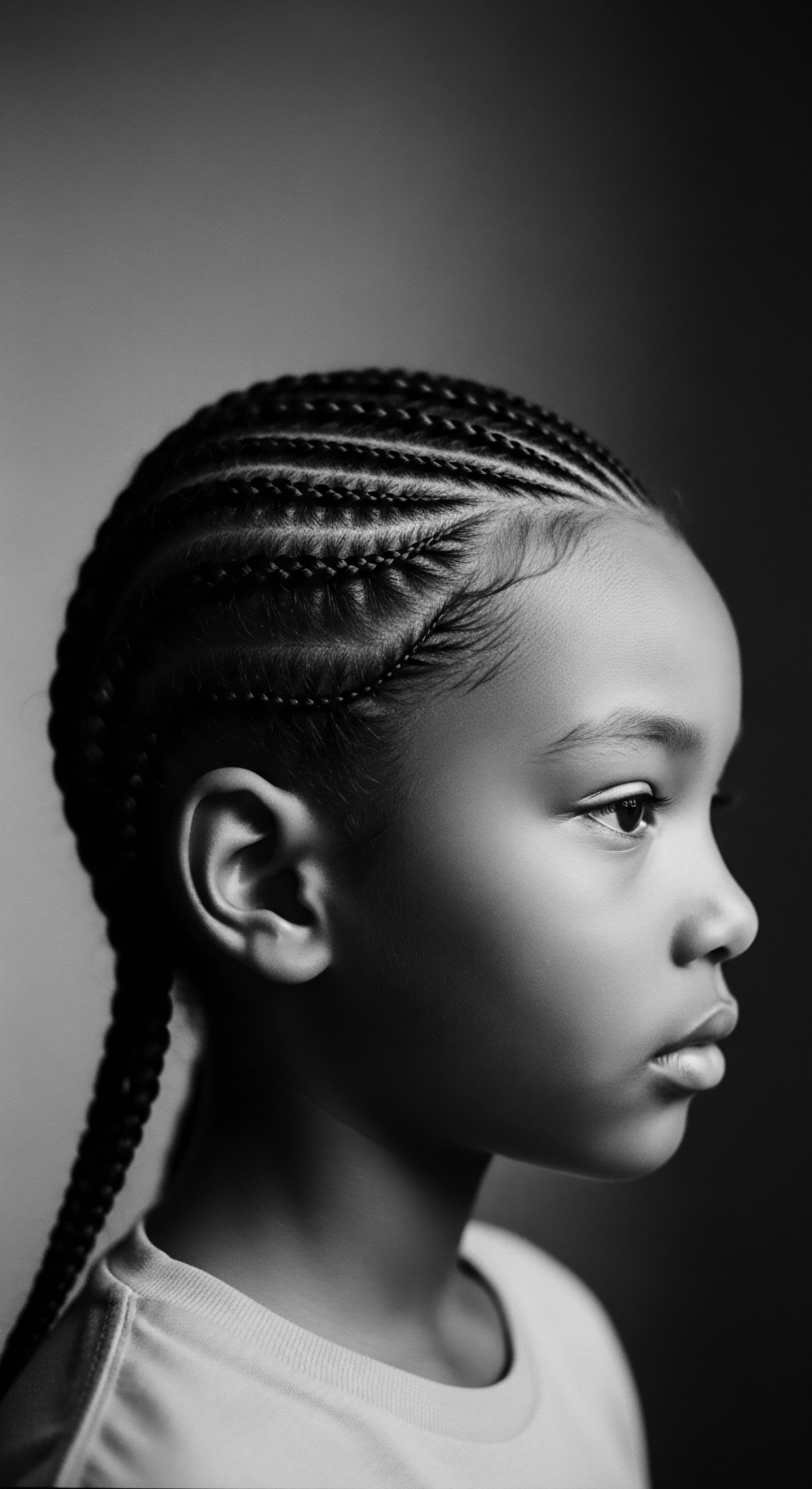
Ritual
The transition from the day’s bustling rhythms to the quiet of night was, for ancient cultures, marked by rituals that extended to hair. These were not merely acts of convenience; they were deliberate, often communal, and deeply resonant with cultural heritage, particularly for textured hair. The practices of preparing hair for sleep served multiple purposes ❉ maintaining a style, protecting strands from harm, and often, connecting individuals to their ancestral roots and spiritual beliefs. What might appear as a simple covering or a quick braiding session was, in many societies, a continuation of a day’s careful hair work, a crucial element in a holistic approach to wellbeing and appearance, reflecting the care given to a precious artifact or a sacred text.
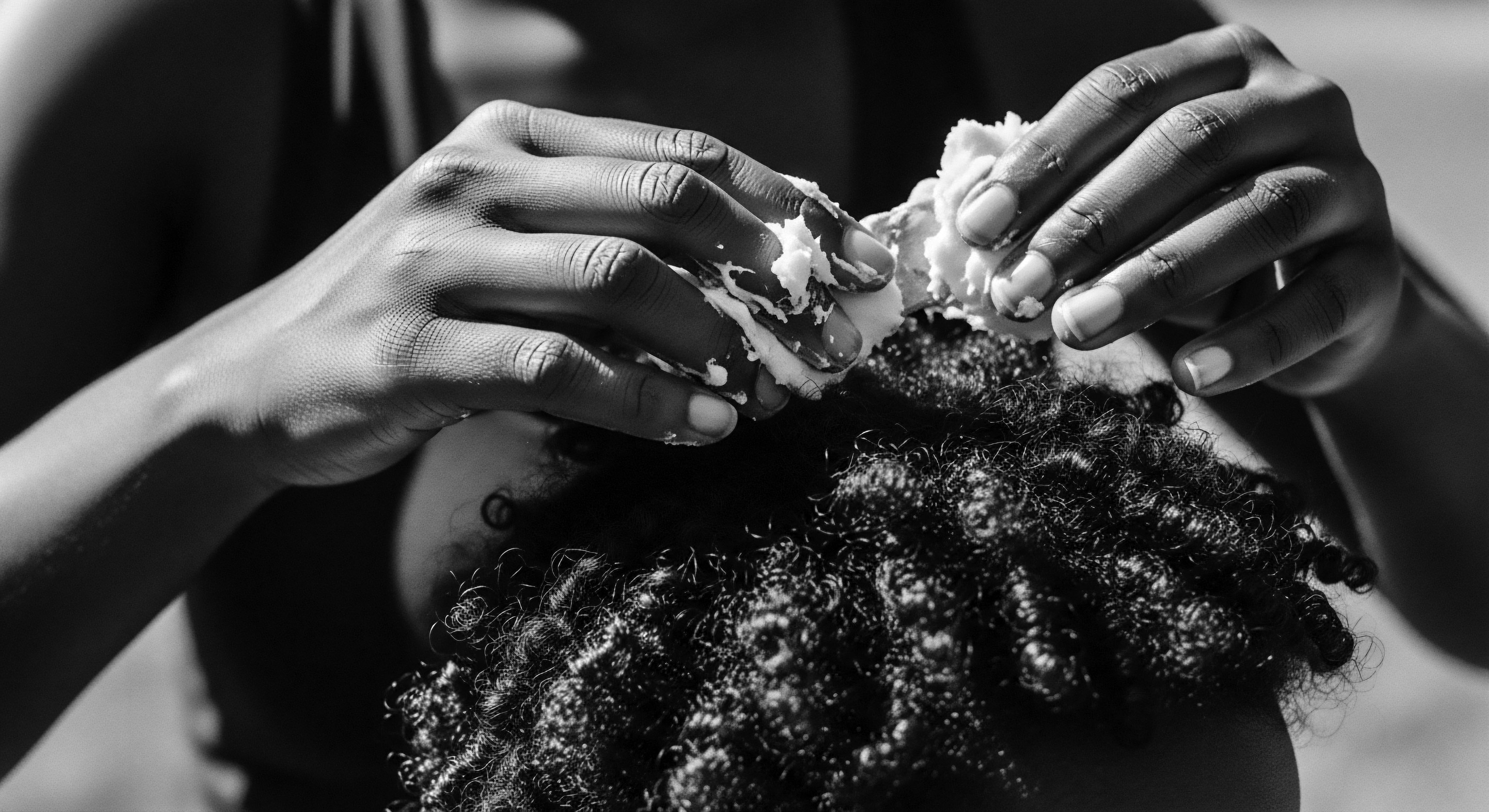
How Did Protective Styles Guard Hair during Sleep?
Protective styles, which find deep roots in African traditions, were a primary method for safeguarding hair at night. These styles, such as Box Braids, Twists, Locs, and Bantu Knots, were not only aesthetic expressions but also served a crucial practical purpose ❉ minimizing manipulation and exposure to environmental elements. By tucking away the hair, these styles shielded it from friction against sleeping surfaces, thus reducing breakage and frizz. Consider the remarkable ingenuity of cornrows, which originated in African cultures as early as 3500 BC.
Beyond their daytime utility, these intricate patterns could be maintained for days, sometimes even weeks, making them an ideal choice for nighttime preservation. The effort invested in creating such styles during waking hours was preserved during sleep, extending their lifespan and the hair’s protection.
The practice of creating these styles often involved communal activity. Mothers, daughters, and friends would gather, braiding hair in a shared space, a tradition that strengthened bonds and passed down cultural identity. The careful creation of these styles, often taking hours, underscored their value and the importance of their preservation. When sleep arrived, the hair, already carefully managed and contained, was less prone to tangling and mechanical stress.
This continuity of care from day to night speaks volumes about the high regard held for hair, particularly within Black and mixed-race communities, where hair has consistently been a powerful symbol of identity and resilience. A powerful historical example of this protective and communicative function can be found during the transatlantic slave trade. Enslaved Africans utilized cornrow patterns to create maps and directions, concealing seeds for survival within the braids. The nocturnal maintenance of these styles protected not only the hair itself but also the crucial information and sustenance contained within, a deep act of resistance and heritage preservation in the face of brutal oppression. This specific, harrowing context underscores the deep connection between hair care, heritage, and survival.
Protective hairstyles, deeply rooted in ancestral practices, served as both cultural expressions and effective nocturnal safeguards for textured hair, even becoming tools of covert communication and resistance.
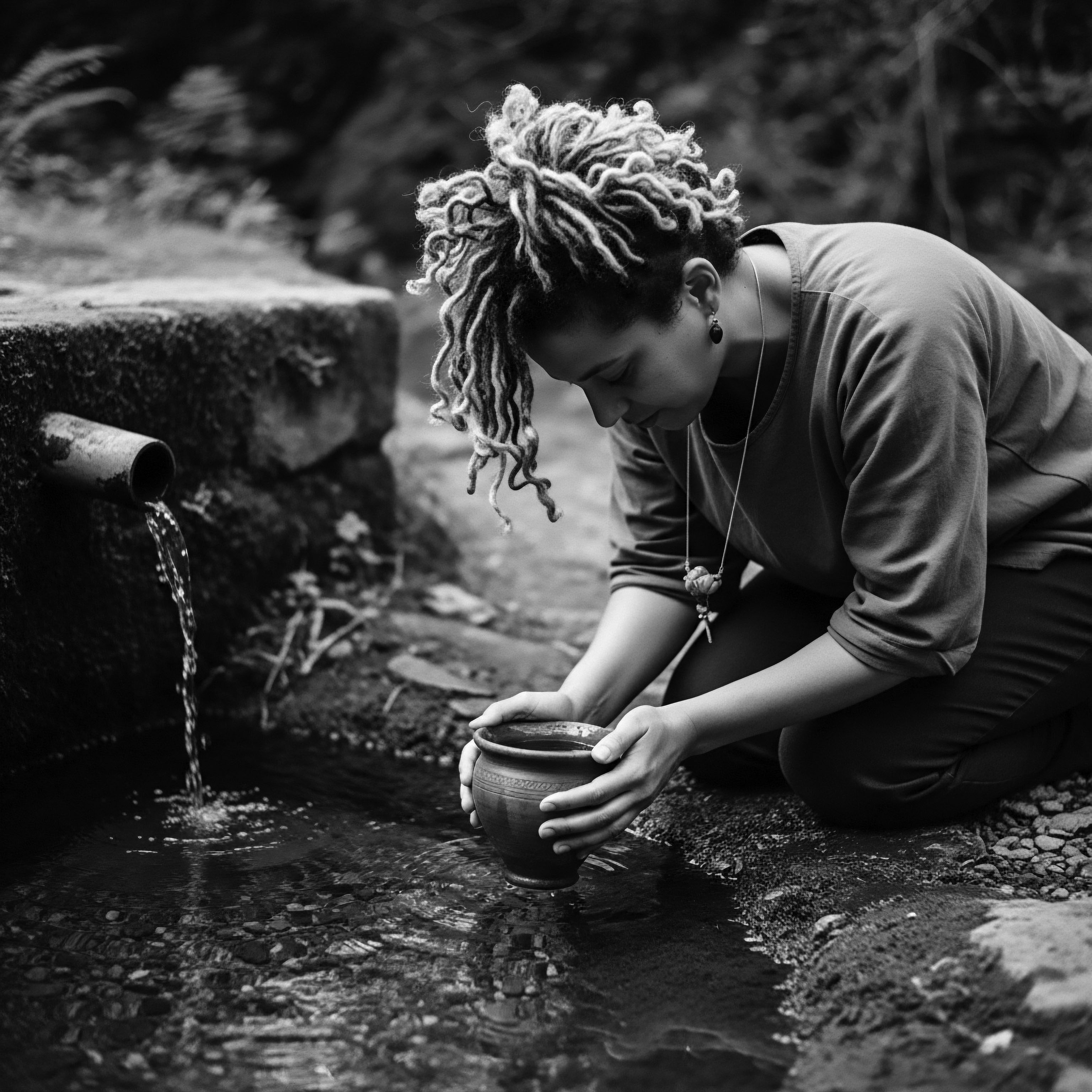
What Materials Served as Ancient Hair Protection?
Beyond styling, coverings and particular materials played a central role in nighttime hair protection. The use of head coverings, from simple wraps to more structured caps, appears across various ancient cultures. In the ancient Mediterranean, veiling was common, with women often using mantles or tight-fitting head coverings. While sometimes tied to modesty or social status, these coverings also provided a practical benefit for hair.
Imagine the efficacy of a tightly wrapped textile preventing stray strands from snagging on rough sleeping surfaces. In ancient Assyria, head coverings were so significant that a man would proclaim his wife by placing a head covering on her. While the primary purpose might have been social, the physical protection offered to the hair underneath was an undeniable side effect.
The benefits of smooth fabrics for hair protection, often associated with modern silk bonnets, find reflection in ancient practices. Silk, originating in China around 2700 BC, became a prized commodity and was traded along the Silk Road, spreading to various cultures. In ancient China and Japan, silk hair wraps were used to maintain intricate hairstyles and prevent damage while sleeping, especially for elaborate updos that took hours to create. Geishas, for instance, used silk wraps to preserve their complex hairdos, recognizing the smooth texture’s ability to minimize friction.
In India, silk scarves and wraps shielded hair from dust and environmental harm, also reducing friction. While not exclusively for nighttime, the recognition of silk’s smooth texture and its ability to reduce friction suggests its utility would have naturally extended to sleep protection for those who could access it. This long-standing understanding of material properties to preserve hair reflects a nuanced approach to care that transcended simple functionality, often blending into expressions of wealth and cultural identity.
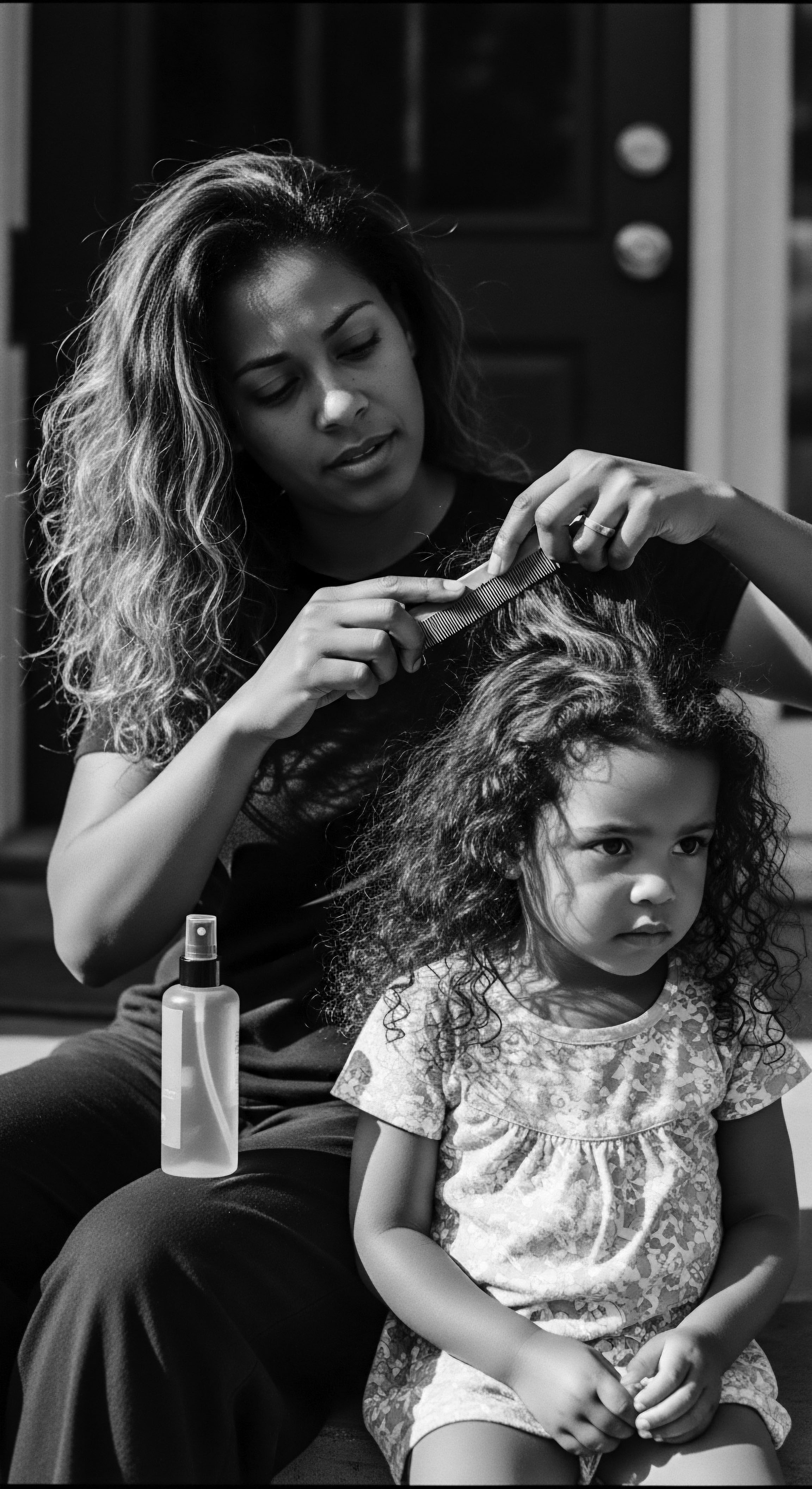
Did Early Societies Use Specific Head Coverings?
Indeed, a variety of head coverings were employed, tailored to local materials, climates, and social customs. In African and Afro-Caribbean cultures, Head Wraps and Head Ties (such as the Ghanaian ‘duku’ or Namibian ‘doek’) traditionally protected curly hair from damage and breakage overnight. These coverings also helped retain essential moisture, which is critical for textured hair types. European women in the mid-1800s wore ‘sleep caps’ or bonnets, often made of silk or other luxurious materials, to keep their hair warm and tangle-free.
Even earlier, Viking Age women used sprang caps, headbands, and scarves, understanding that keeping hair contained during sleep was practical for cleanliness and to prevent tangling. The choice of material varied; while silk became highly prized for its smoothness, more accessible fibers like linen were also used, softening over time with wear. The common thread connecting these diverse traditions is the recognition that hair, when left exposed during sleep, is vulnerable. These coverings, whether simple or ornate, were a tangible manifestation of care, a protective envelope for the hair during its most vulnerable hours.
- Silk ❉ A natural fiber, originating from ancient China, known for its smooth texture which reduces friction and helps retain hair’s natural moisture.
- Linen ❉ Used in some European cultures for bonnets and head coverings, historically becoming softer with wear.
- Plant Fibers ❉ Used in ancient Egyptian wigs and various African headwear for protective and ceremonial purposes, such as fibers from the baobab tree.
- Animal Fats/butters ❉ Sometimes incorporated into headwear as a protective layer or used directly on hair before covering.
| Culture/Region Ancient Egypt |
| Covering Type or Material Wigs (human hair, plant fibers) |
| Protective Benefit Guarded against lice, reduced manipulation of natural hair. |
| Culture/Region Ancient Mediterranean |
| Covering Type or Material Mantles, tight-fitting wraps |
| Protective Benefit Physical shield against friction, modesty, status symbol. |
| Culture/Region Ancient China & Japan |
| Covering Type or Material Silk hair wraps (kazashi, binyeo) |
| Protective Benefit Maintained elaborate styles, prevented frizz and damage. |
| Culture/Region Viking Age Europe |
| Covering Type or Material Sprang caps, headbands, scarves |
| Protective Benefit Kept hair clean, managed, and contained. |
| Culture/Region African/Afro-Caribbean |
| Covering Type or Material Head wraps, head ties |
| Protective Benefit Protected curly hair from damage, breakage, moisture loss. |
| Culture/Region Diverse cultures used head coverings to safeguard hair from friction and environmental factors during rest. |
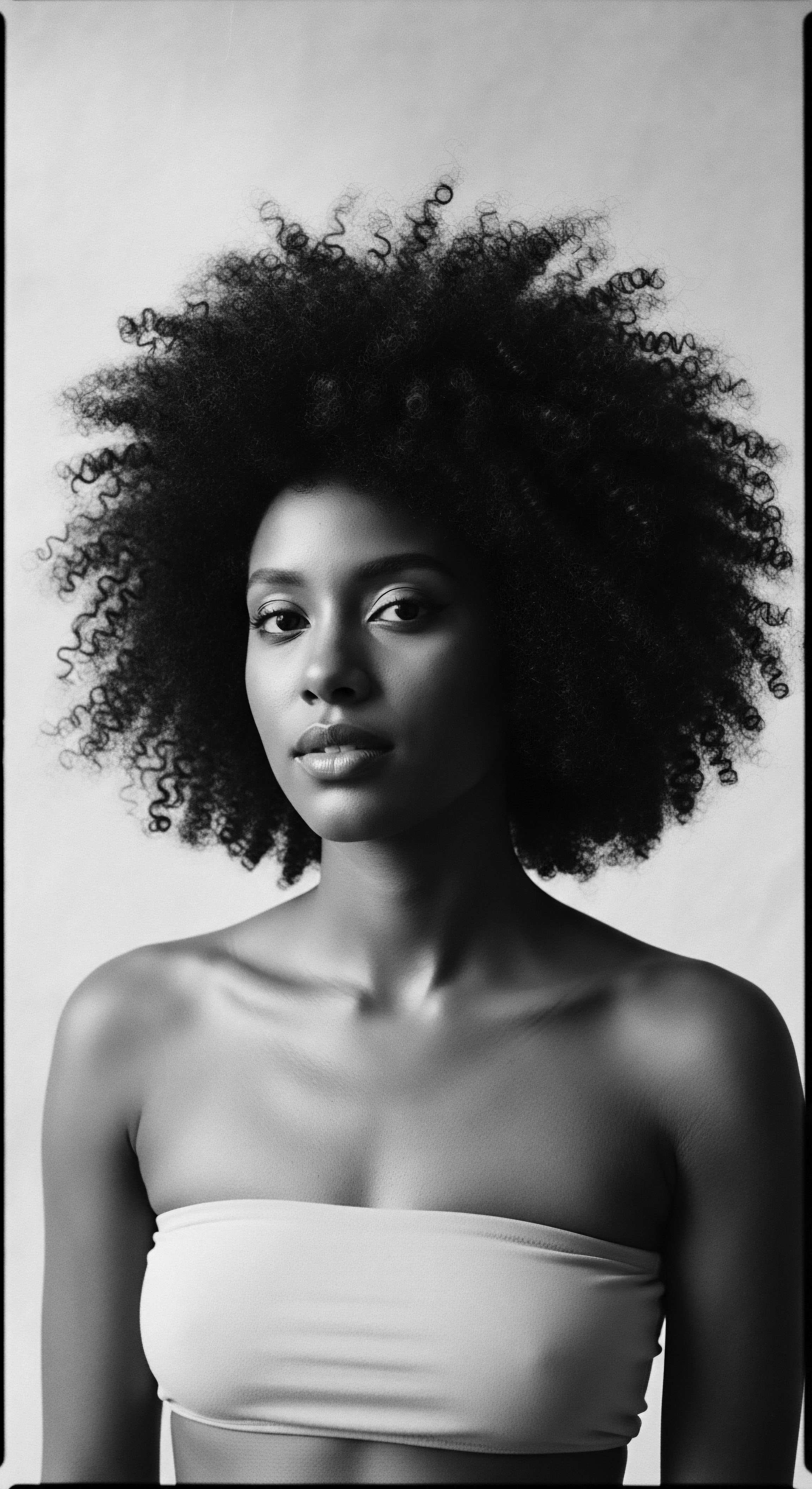
Relay
The deep knowledge of hair care, particularly the nocturnal rituals, was not merely about aesthetic preservation. It was a comprehensive approach, intertwining biological understanding, the wisdom of local botany, and deep spiritual connection. This holistic framework for safeguarding hair at night represents a relay of ancestral practices, a testament to human ingenuity across diverse environments.
For textured hair, this legacy is particularly poignant, as it speaks to centuries of adaptation and resilience, transforming challenges into opportunities for self-expression and community building. The quiet hours of night became a sacred space for renewal, for reinforcing the strength and health of hair, and for transmitting care across generations.
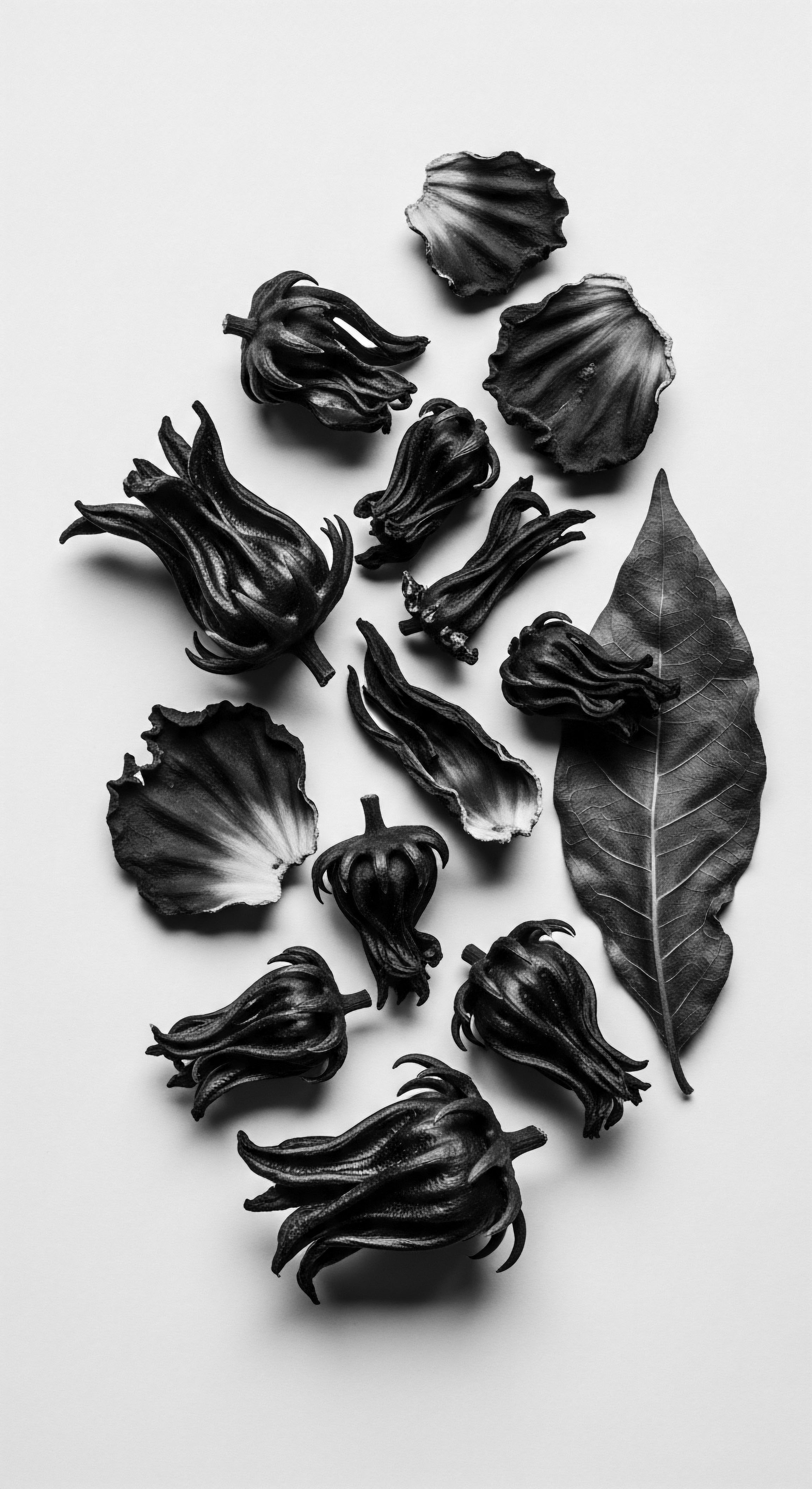
What Traditional Ingredients Protected Textured Hair Overnight?
Beyond physical coverings and careful styling, ancient cultures used a wealth of natural ingredients, often applied as part of nighttime routines, to nourish and protect hair. These practices, passed down through generations, reveal an intuitive understanding of hair’s needs, particularly for textured strands prone to dryness and breakage. In ancient India, Ayurvedic practices emphasized hair treatments with ingredients like Amla (Indian gooseberry), Bhringraj, and Neem. Apprentices would prepare oils by soaking these herbs and roots in coconut oil, then blending them over a slow fire.
This herb-infused oil was then strained and applied to hair every night, sometimes left in overnight to allow for deeper absorption. This tradition, known as ‘Champi’ (the root of the word ‘shampoo’), extended beyond mere grooming, aiming for holistic health, improving blood circulation to hair follicles, and addressing concerns like dandruff and hair fall. The oil, often stored in copper vessels, gained additional nutritional properties, showcasing an integrated approach to wellness. The ritual of Champi exemplifies a multi-sensory engagement with hair care, often performed within families, strengthening bonds and transmitting wisdom through gentle touch and shared moments, as attested by Sarvangi Shah, a beauty product development expert, in her reflections on the intergenerational practice of mothers oiling their daughters’ hair in India.
Similarly, across various African communities, natural oils and butters formed the backbone of hair care. Shea Butter, sourced from West African shea trees, was highly valued for its moisturizing and protective qualities, used to soften skin and promote elasticity. Moringa Oil and Neem Oil, both with ancestral roots in parts of Africa, provided antioxidants and anti-inflammatory benefits, nourishing hair and scalp. These applications, often accompanied by massage, were not just for daytime use.
Many families in the Black diaspora recount traditions of greasing hair with natural products at night to maintain moisture, a practice passed down from African ancestors. This consistent overnight nourishment was crucial for maintaining the health and manageability of textured hair, minimizing damage from daily activities and environmental exposure. The Himba tribe in Namibia, for instance, famously use a mixture of clay and cow fat to create a unique hair paste that not only provides protection from the sun but also aids in detangling, a practice that likely extended to preparing hair for night.
In ancient China, specific herbs and oils were also central to nighttime hair health. Camellia oil, rich in fatty acids, antioxidants, and vitamins, was massaged into the scalp and hair, often left overnight to prevent breakage and promote shine. Black sesame seeds, considered a nutritional powerhouse, were consumed and used topically in masks to strengthen hair strands and reduce hair loss.
Rice water, containing inositol, was used as a rinse to repair damage, a practice that could easily be incorporated into overnight treatments or pre-sleep preparation. These diverse regional practices all point to a shared understanding ❉ consistent, deep nourishment, especially during the hours of rest, is paramount for hair vitality.
Ancestral nighttime hair practices, rich with natural ingredients and gentle applications, provided deep nourishment and protection, a testament to centuries of inherited wisdom.
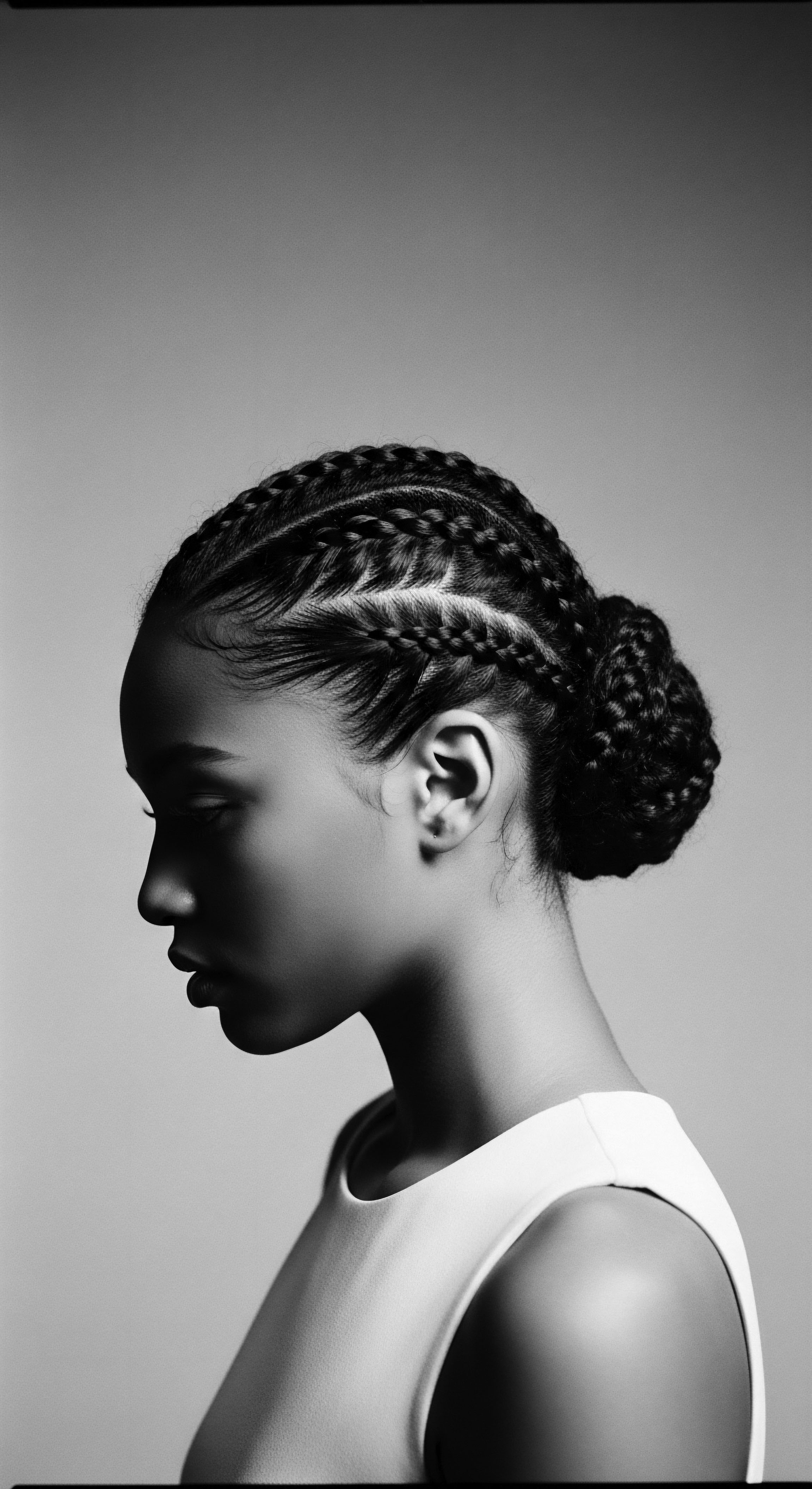
Did Ancient Methods Anticipate Modern Hair Science?
The protective effects of these ancient practices find reflection in modern hair science. The smooth surface of silk, as used in ancient China and Japan, reduces friction, which directly prevents hair breakage, frizz, and tangles — benefits widely acknowledged today for all hair types, especially textured hair. Modern research confirms silk’s low absorbency, meaning it does not strip hair of its natural moisture, a crucial consideration for textured hair, which tends to be drier than straight hair.
The amino acids found in silk can even help restore keratin in hair, keeping it smooth and protected. This scientific validation provides a bridge across time, confirming the efficacy of ancient wisdom.
The application of oils and butters, a nightly ritual in many ancient cultures, directly addresses the need for moisture retention in textured hair. Scientific understanding explains that plant-derived oils coat the hair shaft, sealing in moisture and protecting the cuticle from damage. Research indicates that textured hair is prone to grooming damage and benefits from active protection to reduce breakage. The use of natural oils has been a traditional treatment for centuries, now regaining popularity as modern science validates their protective properties.
For example, coconut oil, a staple in many traditional hair care routines, has been recognized for its ability to reduce protein loss from hair, which is particularly beneficial for strengthening fragile textured strands. This alignment between ancient methods and contemporary understanding underscores the efficacy and foresight of these ancestral practices, proving them to be far more than superstitious beliefs. They represent a deep, accumulated understanding of hair biology and its environmental interactions.
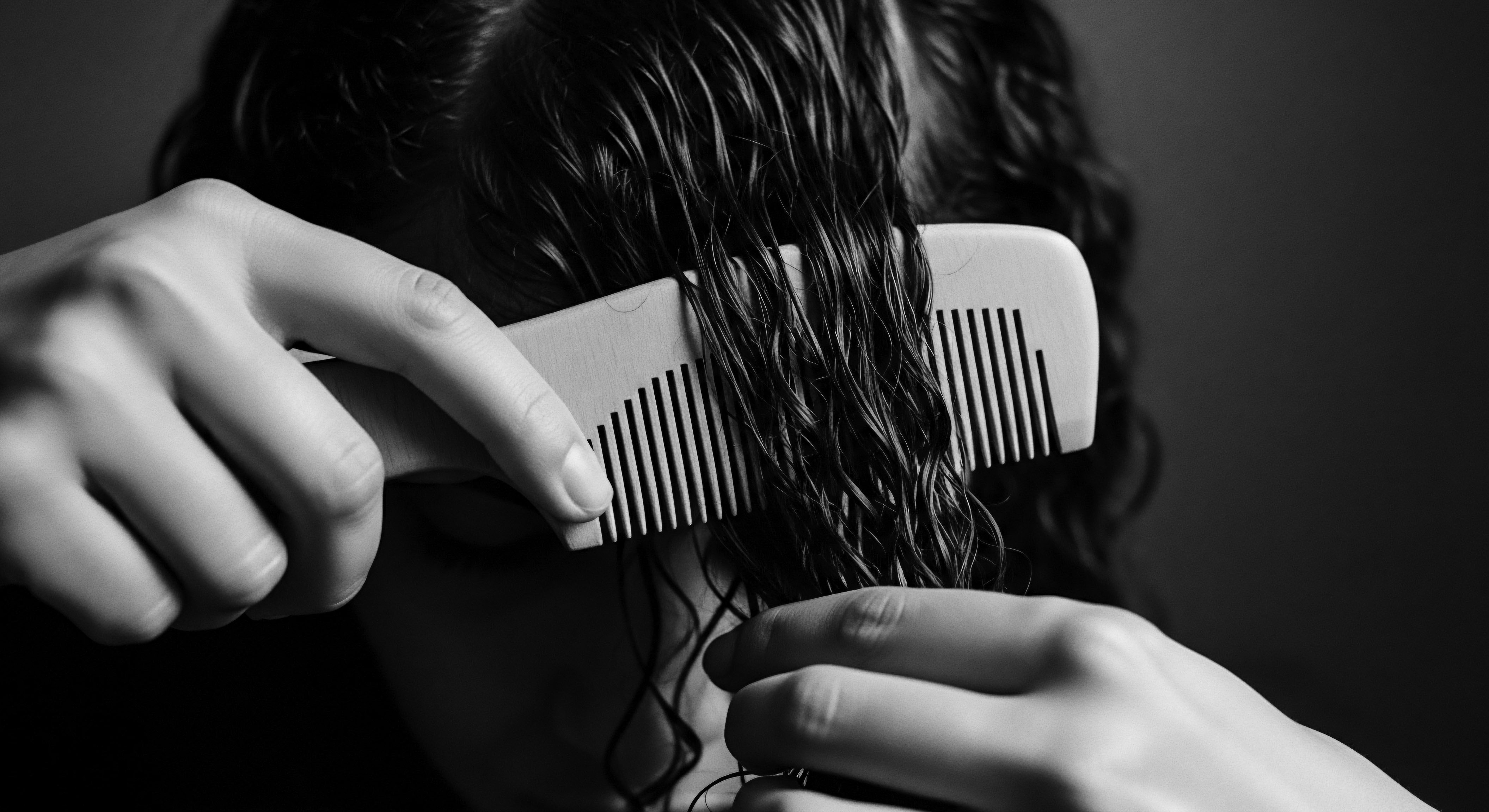
How Did Intergenerational Hair Care Rituals Protect Strands and Heritage?
The core of nighttime hair protection often lay not just in the material or technique, but in the ritual itself and its transmission through generations. For many Black families, hair routines, particularly those involving oiling and protective styling, were and remain a significant act of self-care and a cultural coping technique. As Synia Shim, a psychotherapist, notes, greasing the hair is a tradition passed down from African ancestors, continuing to be shared with children, providing moisture and often a sense of relaxation that decreases negative symptoms of anxiety and stress. This intergenerational intimacy, where touch and shared stories accompany the physical care of hair, reinforces cultural belonging and collective memory.
These moments, often happening in the quiet of the evening, transformed a practical necessity into a powerful act of connection, making the protection of hair at night a deeply personal and culturally resonant practice. The physical act of applying oils and braiding hair became intertwined with the transmission of ancestral knowledge, stories, and the unspoken language of care. This is the living heritage of textured hair ❉ routines that protect not only the physical strand but also the spirit and legacy of a people.

How Did Ancient Hair Care Routines Combat Common Issues?
Ancient communities, through their sustained observation and experimentation, developed solutions for common hair concerns that plagued them, concerns that still challenge many with textured hair today. Dryness, breakage, tangles, and scalp conditions were addressed with systematic approaches rooted in available natural resources. For instance, the consistent use of oils and butters was a direct answer to the hair’s need for moisture, preventing the parched, brittle state that leads to breakage. Scalp massages, integral to practices like Champi, aimed to stimulate circulation, thereby improving nutrient delivery to follicles and combating issues like thinning or hair fall.
The very design of protective styles, by minimizing external exposure and mechanical stress, was a preemptive measure against damage, allowing hair to retain its length and integrity. These solutions were not singular quick fixes; they were part of a comprehensive regimen that acknowledged the hair’s continuous needs, particularly during rest. The wisdom contained within these ancestral practices forms a timeless guide for nurturing textured hair, a heritage of preventative and restorative care.
- Dryness ❉ Addressed by nightly application of highly emollient oils and butters, preventing moisture evaporation from the hair shaft.
- Breakage ❉ Mitigated by protective styles and smooth head coverings that reduced friction against sleeping surfaces.
- Tangles ❉ Managed through pre-sleep braiding, twisting, and the use of wide-tooth combs, often in conjunction with conditioning agents.
- Scalp Health ❉ Supported by herbal rinses and oil massages, promoting circulation and addressing issues like dandruff or irritation.
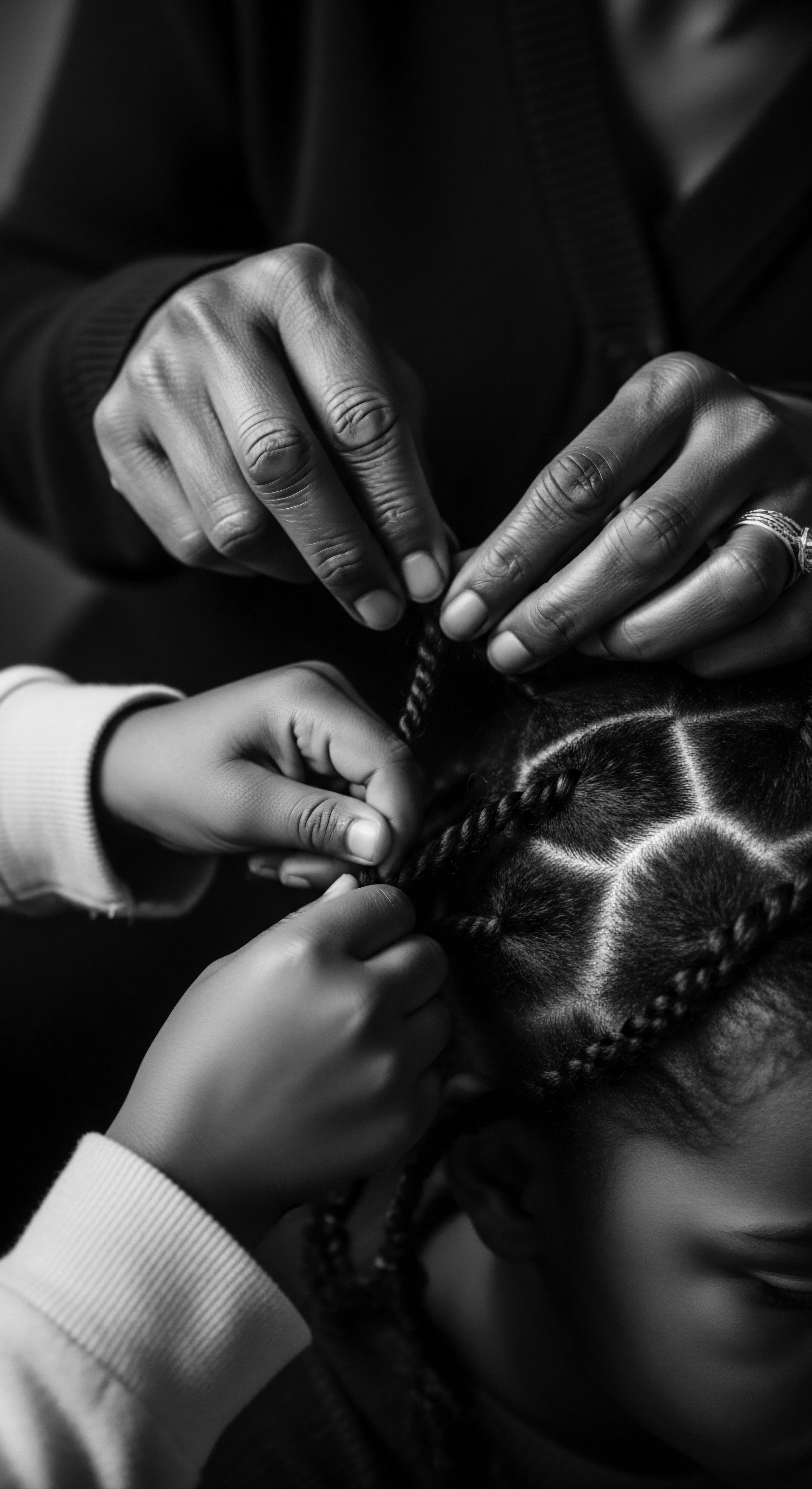
Reflection
As the quiet of night descends, and as we consider the timeless ways ancient cultures safeguarded their hair, we recognize more than just routines; we sense a deep connection to a heritage that pulses through the very Soul of a Strand. For textured hair, this history is not a distant reflection, but a vibrant, living library of resilience, ingenuity, and deep self-regard. The practices of yesteryear—the meticulous braids, the nourishing oils, the protective coverings—were not simply acts of grooming. They were declarations of identity, acts of community, and testaments to an enduring relationship with self, nature, and ancestry.
From the elaborate wigs of ancient Egypt to the communal braiding circles of West Africa, from the Ayurvedic oiling rituals of India to the silk wraps of ancient China, a universal truth is present ❉ hair, particularly textured hair, holds deep meaning. It is a vessel of stories, a link to the past, and a powerful symbol of beauty and perseverance that transcends generations. As we continue to care for our strands today, we honor this ancestral wisdom, perpetuating a legacy that reminds us that hair care is, at its core, an act of respect for our living heritage.

References
- Byrdie. (2022). The Significance and History of Bonnets.
- Curationist. Hair and Makeup in Ancient Egypt.
- Afriklens. (2024). African Hairstyles ❉ Cultural Significance and Legacy.
- Thompson, C. (1998). Hairstyle, Head-coverings, and St. Paul.
- International Design Journal. (2018). Headwear Across the Ages ❉ It’s Religious, Political and Social Significance.
- Manipal Hospitals. Ancient Indian Beauty Secrets For Your Skin And Hair.
- Obscure Histories. (2024). Champi ❉ The Ancient Indian Practice.
- PsychoHairapy. (2024). Our Hair ROOTS ❉ Incorporating our Black Family Hair Traditions and Routines as a Coping Technique to Increase Positive Mental Health.
- Flora & Curl. The History of Black Hairstyles.
- University of the Arts London Research Online. African Hair ❉ Exploring the Protective Effects of Natural Oils and Silicones.
- The Silk Collection. The Tradition of Silk Hair Wraps for Sleeping.
- Esme Luxury. (2024). Silk Hair Wraps in Different Cultures ❉ A Global Perspective.
- The Kurl Kitchen. (2024). The Cultural Significance Of Natural Hair In Different Communities.
- Sew Historically. (2019). History Of The Nightcap – Victorian And Edwardian Hair Care.
- UAL Research Online. (2024). African Hair ❉ Exploring the Protective Effects of Natural Oils and Silicones.
